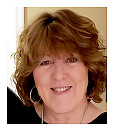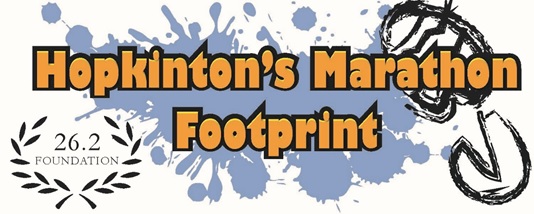
By Michelle Murdock, Freelance Writer
23 September, 2019
Hopkinton is the start line of the world famous Boston Marathon, but does that make is special in the marathoning world? We know it’s special to the residents of Hopkinton, many of whom watch, volunteer, or run the marathon year after year, but what about some of the well-known runners who came here to begin their 26.2 mile journey to the finish line? What do they think? How does Hopkinton compare to other start lines? To find out, read on and hear what they have to say.
Amby Burfoot, Runner’s World Editor at Large, and 1968 Boston Marathon winner, recalled his first time in Hopkinton. It was the spring of 1965 when Burfoot was 18 years old and a freshman at Wesleyan University. He skipped out on his track practice and had his father drive him to Hopkinton to run Boston. His memory of that day includes “a light dusting of snow on the forsythia”, the quaintness of the town, and seeing Johnny Kelley the Elder and the top Japanese runners in their “gleaming white track suits with the red rising sun” warming up on the Town Common. But what was most noticeable to Burfoot was the attitude of the people; “warm and welcoming, the carnival-type atmosphere on the common, the joyous mid-summer attitude.”
“Without knowing specific people, you nevertheless felt very welcomed,” he said.
But it’s also the size of the town that makes Hopkinton different.
“No town as remotely as small hosts a race that is as big as the Boston Marathon,” said Burfoot. Jack Fultz, who first visited Hopkinton in 1971, finished first in the 1976 Boston Marathon, agreed.
“It’s unique in the world of marathoning in that all major marathons, and many secondary marathons, start in larger cities that host those races – and in which many of those marathons start and finish,” he said. “I thought what a quaint, bucolic place – the quintessential small New England town.”
Fultz described a time in 1977 when he was back to defend his 1976 victory when runners were able to drive right into Hopkinton on Main Street until the crowd blocked them from proceeding any further.
“We arrived less than 30 minutes from the start of the race,” he said. “I had to run from the starting line area back to the high school to get my bib number. When I got there, I was told the low numbers that had not been picked up were now at the starting line. I ran back across town, dodging all the runners and spectators, arriving at the starting line five minutes before the start. Nobody knew where the remaining bib numbers were so I ran the race as defending champion without a bib number. When I finished – in ninth place with nearly the same time I won with the year before, they thought I was a bandit and tried to kick me out of the race and finish area. And I never did receive my #1 bib – there’s a blank page in my scrapbook still waiting for it. That was quite an adventure.”
But for Fultz as well as Burfoot, it is the people who live in Hopkinton that make it special. For nearly twenty years, Fultz has coached the Dana-Farber Marathon Challenge team and has used the parish hall at St. John’s as a pre-race staging area.
“It’s been a wonderful haven for our runners amidst all the activities throughout Hopkinton on race day,” said Fultz. “Charlotte Lemoine, a Hopkinton resident and St. John’s administrator, has been our gracious hostess all those years and she’s always made us feel so welcomed, not just at St. John’s but in Hopkinton as well.”
A four-time winner of the Boston Marathon, running legend Bill Rodgers also has special memories of Hopkinton. Rodgers ran his first Boston Marathon in 1973 and has run the 26.2 mile course from Hopkinton to Boston a total of 17 times, finishing first in 1975, 1978, 1979 and 1980.
“It was exciting to be running with champions and Olympians in this oldest of marathons,” said Rodgers. “One of my favorite memories of Hopkinton revolved around an event with Johnny Kelley [the Elder] held at the Town Common before the Marathon,” he said. “Johnny, being the Babe Ruth of our sport in America, was a special marathoner and a terrific person to boot!”
Rodgers also talked about staying with a friend, also a marathoner, who lived in town and the connections that developed between runners and the Hopkinton families who often hosted them.
“I think a connection developed over many years for many runners and Hopkinton families to host runners from around the US and the globe,” he said.
Hopkinton’s size and its small town charm were again discussed, with Rodgers saying that in a world where marathoning has evolved to a big city sport, Hopkinton’s status is fairly unique.
“I think marathoning is a 21 st century sport and is going to continue to grow here in the U.S. and around the world,” said Rodgers, “and that places Hopkinton in a unique historical context. As I’m a small town person by birth, I appreciate the feel of that life and I think Hopkinton lends a certain credibility to the power and beauty of this wonderful ‘Boston Marathon’”.
Joan Benoit Samuelson’s first Boston Marathon was in 1979 when she was still a student at Bowdoin. Like Fultz, Samuelson describes a much different arrival than exists today. She was staying with a friend in Newton, got to Hopkinton late, and had to “bushwhack” back to the start after picking her bib number. In the pocket of her sweat pants which were later misplaced, was a brimstone from an island in Maine given to her by her brother. She won the race in 1979 and again in 1983, setting a world record and now carries a new brimstone for good luck. She also describes Hopkinton as the quintessential New England town where the residents are always so generous and welcoming.
“Viewed from the outside, Hopkinton is a small community, almost a sheltered community that looks idyllic, but it takes a lot of people cooperating for an event like the Boston Marathon to work. Hopkinton gets that,” said Samuelson who praised the volunteers that come out and are critical to the success of the event. “Hopkinton is a role model for other communities in New England and throughout the world.”
Our last conversation about what makes Hopkinton special was with Dick Hoyt, a familiar figure with his son Rick to many in Hopkinton. Team Hoyt ran their first Boston Marathon, and their first marathon ever, in 1981.
“I like these little towns,” said Dick. “I’m not a city person. I felt energy there.”
He also felt welcomed as he and his son Rick made their way to the start line to take their place with the other wheelchair entrants, although they were different since they ran as a team. Other special memories of Hopkinton are tied to people; the members of the 26.2 Foundation, known in 2006 as the Hopkinton Athletic Association, who raised $97,000 to purchase a new van for Rick, and Dale Danahy of Colella’s Supermarket who, on more than one occasion, stored the Hoyt’s running chair at her house and delivered it to the start line on Marathon Monday.
“She’s been awesome,” said Hoyt. “Unbelievable support of us for years.”
Other important memories of Hopkinton for Dick Hoyt included gathering at Center School where the wheelchairs meet before the race and meeting Hopkinton people who help the wheelchair athletes.
“The people of Hopkinton sort of adopted Rick and I,” said Dick who went on to talk about speaking to students at the Middle School and the bronze statue of Team Hoyt that is now in place on the Center School lawn. The statue, commissioned by John Hancock to commemorate the Hoyts 30th Boston Marathon run, was donated to the Town of Hopkinton and will now forever inspire others with their message of “Yes You Can”. Dick Hoyt says he is especially touched by the number of his friends and supporters who come to Hopkinton just to see and take pictures with the statue of Team Hoyt.
“It’s just unbelievable,” he said.
And so, while Hopkinton on the outside is the quintessential small New England town, it’s really much larger on the inside. It holds the memories of marathoners, both past and present, and the dreams of those yet to run. It represents the spirit of the marathon in its unique history, and most importantly, in its people. It’s a special place forever recognizable for being 26.2 miles from Boston.
Runner Biographies
Amby Burfoot Ambrose Joel Burfoot is an American marathoner, whose peak competitive years came in the late 1960s and early 1970s. He was the winner of the 1968 Boston Marathon. After retiring from competition, he became a running journalist and author. Burfoot was the top editor (editor-in-chief) at Runner’s World for many years and both writes for Runner’s World and serves as editor-at-large.
Jack Fultz Jon Willis (“Jack”) Fultz is a retired American long-distance runner, who came to prominence in the 1970s after winning the 1976 Boston Marathon, the hottest Boston Marathon on record known as the “Run for the Hoses” when temperatures reached close to 100 degrees. Fultz is an instructor of sport psychology at Tufts University, a fitness consultant and personal coach, and a training consultant to the Dana-Farber Marathon Challenge.
Bill Rodgers William “Bill” Henry Rodgers is an American runner and former American record holder in the marathon who is best known for his victories in the Boston Marathon and the New York City Marathon in the late 1970s. Rodgers won both races four times each between 1975 and 1980, twice breaking the American record at Boston with a time of 2:09:55 in 1975 and a 2:09:27 in 1979. In 1977 he won the Fukuoka Marathon, making him the only runner ever to hold the championship of all three major marathons at the same time. Track & Field News ranked Rodgers #1 in the world in the marathon in 1975, 1977 and 1979. Of the 59 marathons Rodgers ran, 28 were run under 2:15.
Joan Benoit Samuelson began running track in high school in Cape Elizabeth, Maine. Samuelson continued on to Bowdoin College where her career soared. She received All-American honors in cross-country and track and won the Boston Marathon in 1979, setting an American and course record, all before she graduated. Samuelson won the Boston Marathon again in 1983, this time breaking the world record. One year later, at the age of 27, she won the gold medal in the first women’s marathon at the Los Angeles Olympics. In 1985, she won the Chicago Marathon with an American record time of 2:21:21.
Dick Hoyt Team Hoyt began in 1977 when Rick Hoyt asked his father Dick Hoyt if they could run in a race together to benefit a lacrosse player at his school who had become paralyzed. He wanted to prove that life went on no matter your disability. Dick Hoyt was not a runner and was 36 years old. After their first race Rick said, “Dad, when I’m running, it feels like I’m not handicapped.” As of April 2012, the Hoyts had competed in 1,077 endurance events, including 70 marathons and six Ironman triathlons. They had run the Boston Marathon 30 times. Also adding to their list of achievements, Dick and Rick biked and ran across the U.S. in 1992, completing a full 3,735 miles in 45 days. ESPN honored Team Hoyt with the Jimmy V Perseverance Award at the ESPYS on July 17, 2013.

